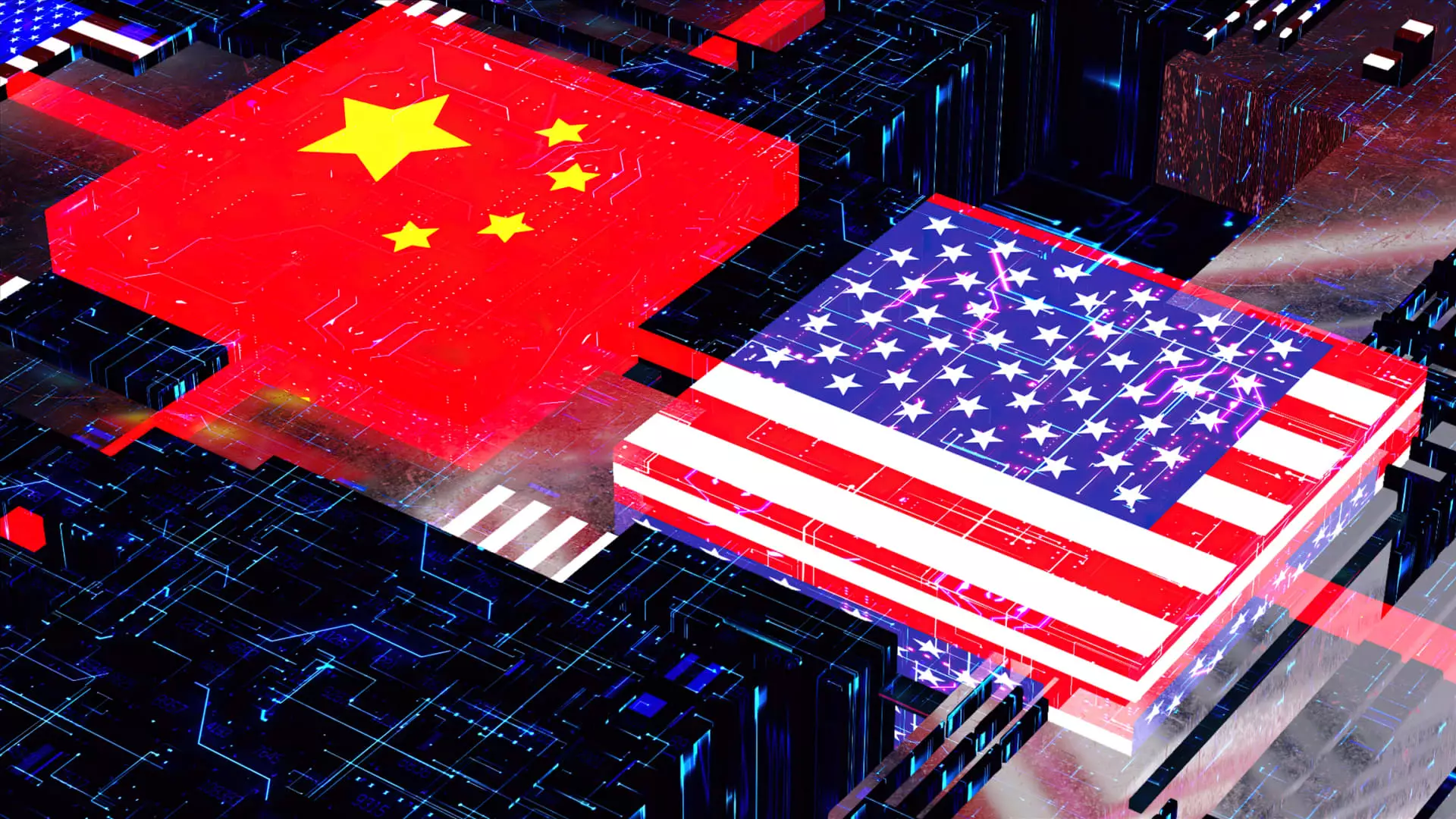The semiconductor industry, which underpins the most advanced technologies of our age, is at a crossroads. Recent earnings seasons have echoed one predominant theme: uncertainty. This uncertainty, shaped largely by U.S. trade policies and shifting geopolitical tensions, primarily concerning China, has created an environment where forecasting demand for semiconductors is increasingly fraught with complications. The multi-tiered ramifications of these evolving circumstances indicate that the very backbone of U.S. technological advancement might be cracking under pressure.
A parole from President Trump’s administration introduced a wave of tariffs that were ostensibly designed to bolster domestic manufacturing but resulted in unanticipated outcomes. Although some of these tariffs were temporarily paused, the specter of impending duties on semiconductor technologies fueled speculation and trepidation among both manufacturers and investors. The market has become a battleground; as the U.S. government tightens its grip on export restrictions, American semiconductor giants contend with revenue losses and postponed plans, leading to a disheartening atmosphere rife with hesitation.
Downward Spirals and Dim Outlooks
Numbers do not lie, and in the case of semiconductor firms, they paint a troubling picture. For instance, Advanced Micro Devices (AMD) anticipates a staggering $1.5 billion in revenue loss due to AI chip export restrictions to China. While financial forecasts can sometimes be mere projections, in this case, they indicate a concerning trend: the policy landscape is no longer a mere backdrop but a direct adversary to business continuity. Similarly, Super Micro’s refusal to provide guidance for its fiscal year 2026 reflects an unwillingness to step into a fog of ambiguity—a sentiment echoed across the semiconductor sector.
Marvell Technology recently decided to postpone its investor day, further contributing to an atmosphere of apprehension. The reluctance to face stakeholders with uncertainty is telling; rather than fostering trust, these actions serve as a warning sign that the climate ahead is fraught with hazards. Share prices reflect this breakdown in confidence, underlying that market reactions are not just temporary blips but rather substantial indicators of broader obstacles. The VanEck Semiconductor ETF’s 12% drop this year underscores a growing disillusionment among investors, who appear to be losing faith in the semiconductor sector as a safe bet.
Global Competitiveness Under Duress
In the face of looming uncertainty, American companies are not the only ones struggling. Samsung, a major player in memory chips, resonates equally with anxiety, voicing concerns about “demand volatility” stemming from U.S. tariff policies. With every word, it becomes evident that this chapter of trade relations does not merely impact American firms; it reverberates throughout the global supply chain. The interconnectedness of today’s economy means that an isolated policy decision can send shockwaves rippling across the world.
Analysts like Ben Barringer from Quilter Cheviot have precisely articulated this dilemma, explaining that the semiconductor sector is navigating a web of conflicting demand signals against a backdrop of geopolitical headwinds. This consistent state of flux is setting the stage for unprecedented challenges. With AI technology rapidly forward, it appears as if the U.S. has inadvertently handed its competitors a head start. As Chinese firms such as Huawei and Alibaba invest heavily in developing indigenous technology, America’s hesitation may lead to long-term repercussions, unwittingly stifling its innovation edge.
Innovation Stunted by Restrictions
One cannot ignore the sentiment voiced by influential figures in the semiconductor landscape. Nvidia’s CEO, Jensen Huang, emphasized the urgency for the U.S. to compete globally, arguing that “waiting around” only handicaps American businesses. This call to action highlights a critical understanding: stifling competition isn’t the answer and only masks a deeper lack of strategic direction. By aiming to blunt the prowess of Chinese firms through export restrictions, the U.S. risks alienating itself from a potentially thriving AI market estimated to be worth $50 billion in the next few years.
Engaging in an arms race of technological development requires adopting a bold stance. If American companies are bound solely by notions of protectionism, they begin to relinquish their footing in the world stage. This could catalyze an endless cycle of retaliation and missed opportunities, encouraging homegrown competition that, in the long run, might render the U.S. semiconductor industry obsolete.
Rethinking America’s Role in Global Innovation
What the semiconductor industry currently needs is a transformative approach—one that engenders collaboration rather than isolation. The path to future innovation lies in strategic partnerships, open markets, and a commitment to remaining at the cutting edge of technology. U.S. companies must embrace competition as a driving force for development rather than allowing restrictive policies to chain their potential. A more open approach could reinvigorate the spirit of innovation, reaffirming the nation’s commitment to leading the charge in the semiconductor race. It is time for the U.S. to stop merely watching the race from the sidelines and to put its foot on the gas pedal.

